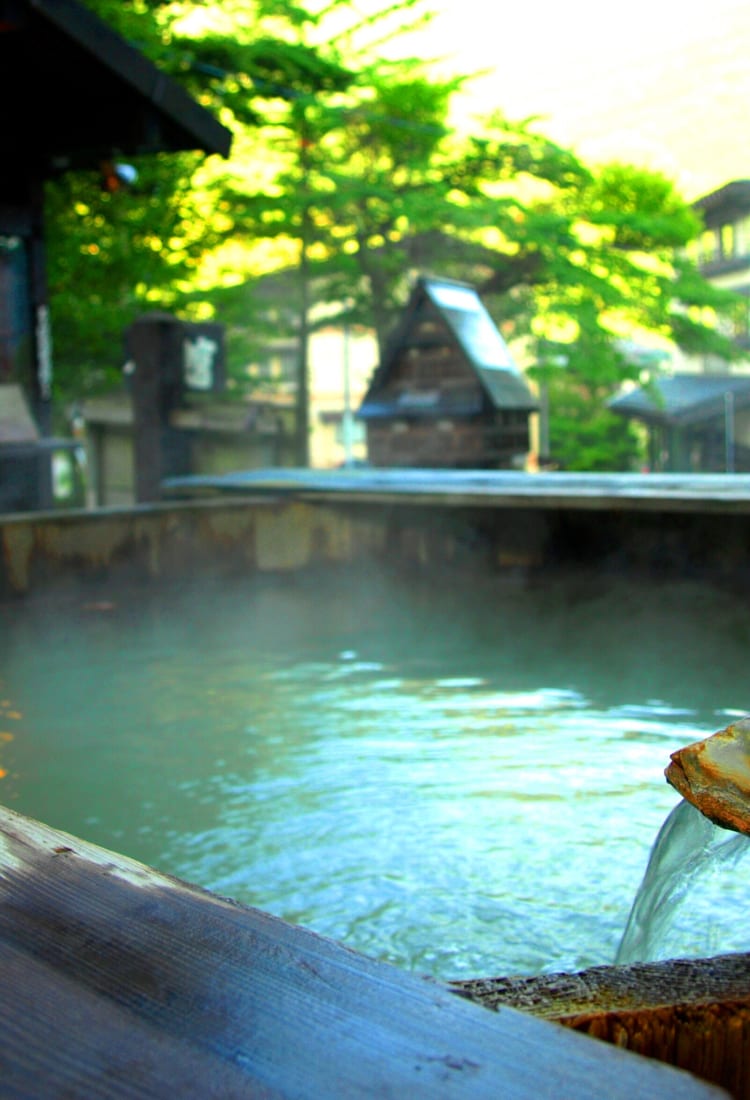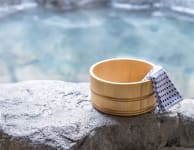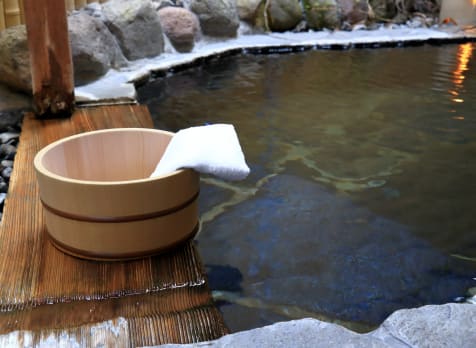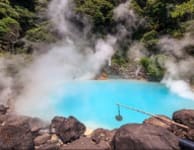Learn how to take a bath Japanese-style
A trip to Japan isn't complete without a proper Japanese bath, and whether you plan to visit a sento (public bath) or an onsen (hot spring), there is some bathing etiquette you need to know. Step carefully into Japanese bathing culture, just like a local, by following these essential tips.
Tips
- Wash yourself thoroughly in the shower area before you enter the baths
- Bring a hair elastic and tie up your hair before entering the bath
- Tattoos are prohibited in most hot springs but allowed in most public baths
Onsen vs. sento
Japanese bathing culture is focused on onsen and sento. And while you might speak of them together, they are not the same thing.
An onsen is a hot spring bath that uses mineral-rich water from deep below the earth. Onsen waters have numerous medicinal benefits, and locals will travel far to enjoy a specific water source.
A sento is a public bathhouse. Each neighborhood has one, and traditionally, families visit them on a regular basis. Sento have a long history in the community as a place of interaction and bonding.

Bathing etiquette—the basics
Most facilities have separate baths for male and female guests. In these facilities, remove all clothing before entering. A few facilities will have shared baths, and in these places, a swimsuit is required.
Take a shower before entering the baths. If you are at a hot spring, shampoo, body wash and towels will be provided, but if you are at a public bath, you need to rent or bring your own. Each shower has a stool and bucket. Take a seat, and pour hot water over yourself using the bucket. Make sure to turn off the water when not in use, and be mindful not to splash others.
Once you're clean, you can enter the baths. Do not put your towel or other items in the water, instead put it to the side. You should also tie up your hair. Remember that the baths are for bathing and not swimming. The water in the baths may be very hot. Dip a toe in to acclimatize and make sure to take frequent breaks.
Another option
If you feel uncomfortable being naked in front of others or are worried about your tattoos, you can always look for private charter baths, called kashikiri, or a ryokan (traditional Japanese inn) with rooms that have en-suite baths. These typically come at a premium price but may be worth it for a fuller Japanese cultural experience.






























































